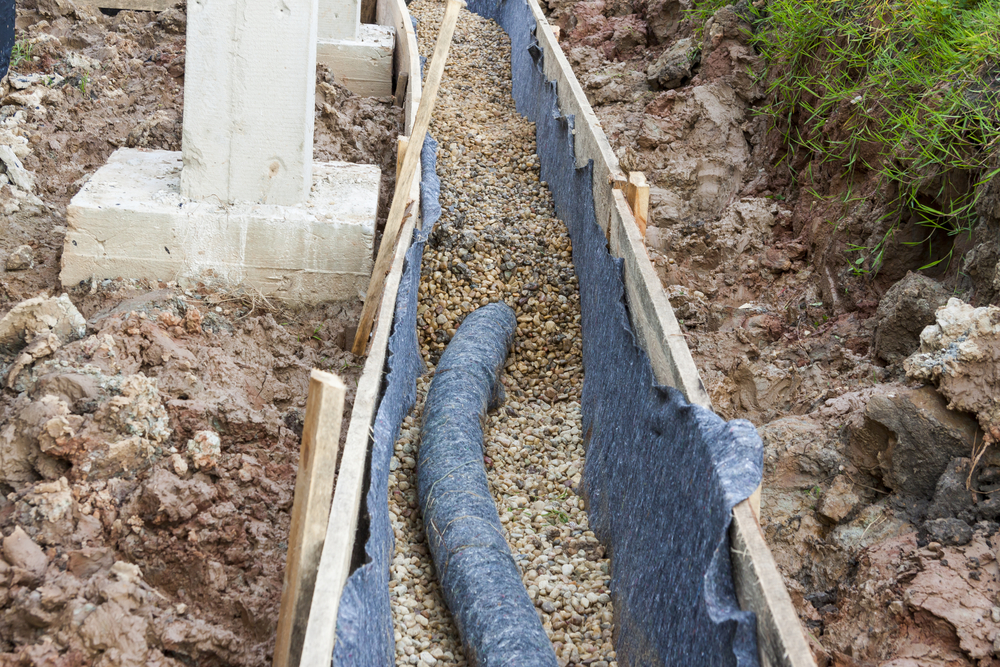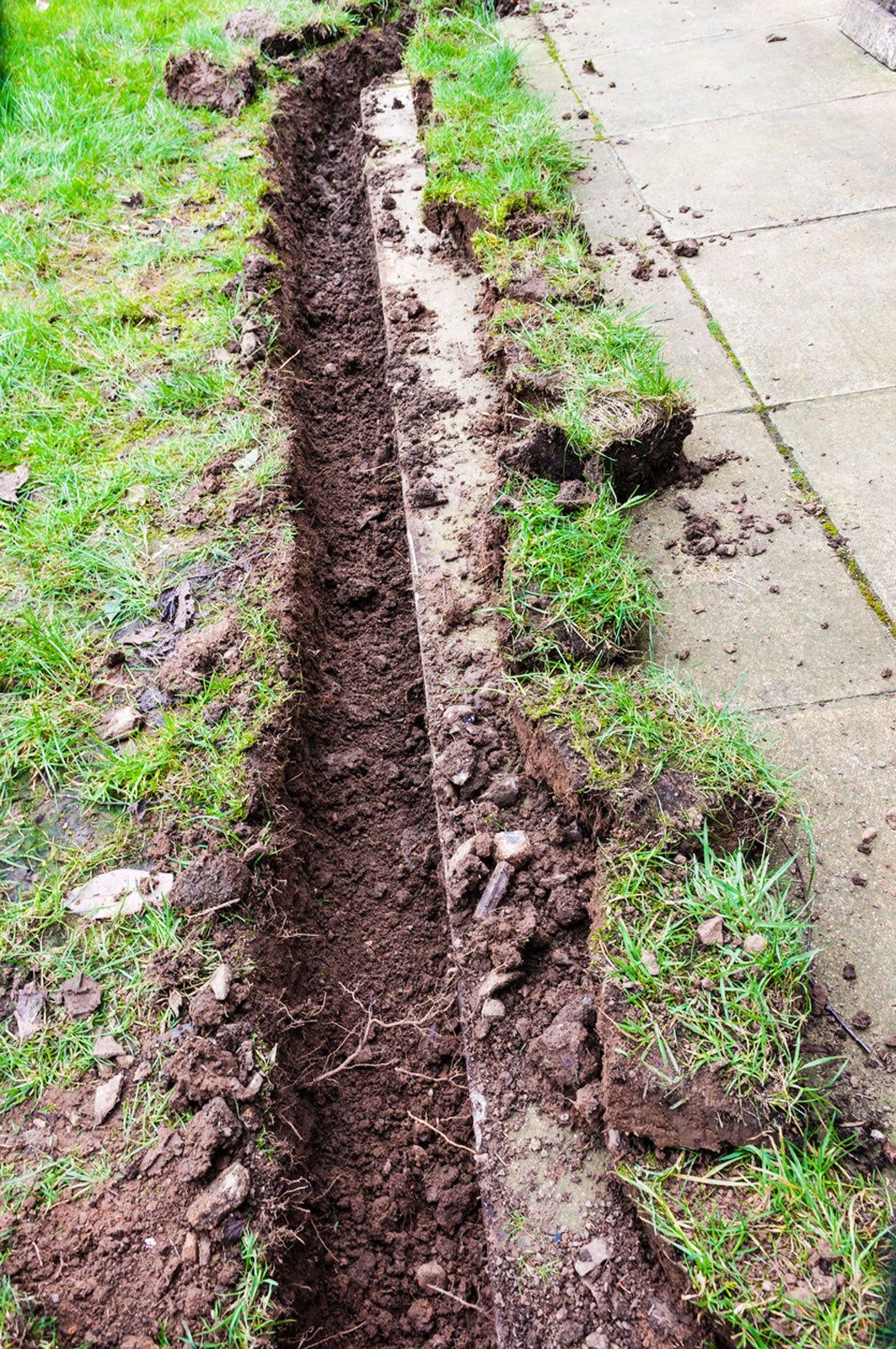How a Portland French Drain Stops Underground Flooding
How a Portland French Drain Stops Underground Flooding
Blog Article
The Crucial Guide to Keeping Your French Drain for Long-Lasting Efficiency
Keeping your French drain is key to its performance and your property's defense. Routine checks can save you from pricey fixings and water damage. You'll would like to know what signs to look for and just how frequently to examine your system. And also, recognizing the cleaning process can make a significant difference. Let's discover the essential steps for guaranteeing your drainpipe operates well for many years to find.
Recognizing the Feature of a French Drainpipe
A French drainpipe is an important component in managing water around your home. It directs excess water away from your foundation, preventing flooding and damages. When heavy rain drops, the drainpipe accumulates water via a perforated pipe buried in crushed rock. This system permits water to flow easily, lowering stress on your cellar walls and reducing the threat of leaks.You may wonder just how it operates in method. As water fills the soil, gravity pulls it toward the drainpipe. The perforated pipe captures this water, moving it to a designated drainage location or storm drain. This procedure maintains your lawn completely dry and protects your home's structural integrity.Understanding just how a French drain functions is vital to valuing its importance. By successfully carrying water away, it assists maintain a dry and secure living environment. Keeping your French drainpipe in leading problem warranties you stay clear of pricey repair services down the line.
Regular Examinations: What to Search for
Beginning by inspecting for any clogs that may be obstructing water flow when you're examining your French drainpipe. Pay focus to indicators of surface area disintegration around the drain, as this can indicate possible concerns. Normal assessments will aid maintain your drainage system operating successfully.
Clogged Drainpipe Assessment
Exactly how can you tell if your French drain is obstructed? Watch for water pooling in your backyard, especially after hefty rain. That's a red flag if you discover areas where water collects rather of draining pipes. You should also check the drain electrical outlet; if water isn't moving out as it should, there's most likely an obstruction. Listen for uncommon gurgling sounds, which can show trapped air. Furthermore, evaluate the drain's surface for any kind of plants growth, as origins can infiltrate and clog the system. Finally, if you scent moldy smells, it might aim to stagnant water triggered by an obstruction. Regularly reviewing these indications can aid you keep your French drain efficiently and prevent pricey repair work.
Surface Erosion Examine

Cleaning Your French Drainpipe: Step-by-Step Overview
Cleansing your French drainpipe is crucial for keeping it working appropriately. You'll need some certain devices and a clear procedure to assure every little thing runs smoothly. Allow's walk with the steps and tips for preserving your drain efficiently.
Tools You'll Need
To take on the task of cleansing your French drainpipe successfully, you'll wish to gather a few vital devices. Order a sturdy set of handwear covers to shield your hands from debris and sharp things. A little shovel or trowel will aid you get rid of dirt or obstructions around the drain. For removing out the interior, a plumbing technician's snake or a high-pressure water nozzle can be incredibly valuable. You'll also require a container for gathering any type of particles you take out. Ultimately, having a yard hose pipe on hand will certainly make it less complicated to rinse out the drainpipe and assure it's moving smoothly. With these devices ready, you'll be established for a thorough cleaning session!
Cleaning Refine Actions
Begin by assessing the location around your French drain for any kind of visible debris or obstructions. Get rid of fallen leaves, branches, or dirt that may obstruct water flow. Next, check the inlet and outlet areas; clear any type of blockages to guarantee proper drain. Make use of a garden tube to purge the drainpipe, guiding water into the inlet. This helps remove any kind of collected sludge or debris. Think about utilizing a plumbing professional's snake to break them up if you observe consistent clogs. After cleaning, inspect the gravel around the drain; replenish it if it's cleaned away. Validate the drainpipe covers are undamaged and firmly in location to stop particles from going into. Routine cleansing keeps your French drainpipe working properly.
Maintenance Regularity Tips
While regular maintenance is vital for your French drainpipe's long life, knowing exactly how commonly to keep it can make all the difference. Preferably, you must check your French drain at the very least two times a year, ideally in spring and loss. After hefty rains or snowmelt, check for blockages or debris. If you observe any kind of standing water, it's time to clean your drain.In areas with hefty vegetation, even more constant upkeep-- about every 3 months-- might be necessary. Furthermore, think about cleansing your French drain after significant tornados or if you observe water pooling in your lawn. By remaining proactive, you'll ensure your French drainpipe features effectively and shields your home from water damage. Normal checks will certainly conserve you time and money over time.
Recognizing Usual Concerns and Their Solutions
It's essential to determine common concerns with your French drain and execute effective solutions when you discover water pooling in your backyard or damp spots in your basement. One regular issue is blocking, often brought on by particles like fallen leaves or debris. To repair this, you can make use of a plumbing snake or a high-pressure water jet to clear blockages.Another issue might be inappropriate incline. If your drain isn't sloped correctly, water won't stream far from your home. You can change the incline by excavating and repositioning the drain pipe.Lastly, check for damage or splits in the drain itself. If you discover any kind of, changing the harmed areas is essential for peak performance. By addressing these issues without delay, you'll aid assure that your French drain remains to work efficiently, securing your home from water damages and preserving a dry, risk-free atmosphere.
Seasonal Maintenance Tips for Your French Drain
Addressing common concerns with your French drainpipe is simply the initial step in ensuring its long-lasting performance. Seasonal maintenance is important for peak performance. In the springtime, eliminate leaves and debris that may have accumulated throughout wintertime. Examine for any type of blockages in the outlet or capture container, as water requires a clear path to flow freely.During summer, examine your my review here drain for any kind of indications of settling or changing soil. Make sure it's still level and functioning effectively. As fall strategies, clear out any type of fallen entrusts to stop blockages prior to winter months arrives.In winter, watch for freezing temperatures. If you live in a cold climate, ensure your drainpipe isn't at risk of cold. Shielding subjected pipes can help. Normal checks and prompt upkeep can avoid costly repair work and keep your French drain working efficiently year-round. Stay aggressive and take pleasure in tranquility of mind knowing your drainage system remains in excellent form!
When to Call an Expert
When to call in a specialist can conserve you time and stop further damages to your French drain, understanding. It's a clear indication that your drainpipe may be clogged or damaged if you see consistent standing water in your backyard. Do not neglect odd smells, as they can indicate sewer back-up or degeneration, which needs immediate attention.If you discover that your drain isn't working effectively after attempts to clean or keep it, it's time to connect for specialist assistance. Additionally, if you're not sure regarding the underlying problems or do not have the required tools, hiring a professional can provide tranquility of mind.Finally, if your French drainpipe is old or has actually experienced considerable deterioration, specialist analysis can figure out whether fixings or complete replacement is required. Trust fund the experts to ensure your drain system functions effectively for years to find.
Tips for Stopping Future Drainage Troubles
To keep your French drainpipe operating effectively, consistently checking and preserving it can make all the difference. Begin by clearing debris, leaves, and dirt from the surface and drain openings. This protects against blockages that can lead to water backup. Check the gravel around the drainpipe; if it's compacted or worn down, think about including fresh gravel to maintain excellent flow.Next, draw away water far from your drain by making sure downspouts and seamless gutters are clear and go to this web-site guiding water at least three feet away from your foundation. Frequently evaluate for any signs of damage or sagging. If you discover problems, resolve them immediately.Finally, think about mounting a filter or a catch basin to catch bigger debris prior to it gets in the drainpipe. By remaining positive with these pointers, you'll minimize the threat of future drain problems and keep your French drain in leading shape.
Regularly Asked Questions
Exactly how Lengthy Does a French Drainpipe Normally Last?
A French drain commonly lasts around 30 to 40 years, depending upon the products utilized and maintenance (Portland French Drain). If you maintain up with regular checks, you can extend its life-span also additionally
Can I Mount a French Drain Myself?
Yes, you can mount a French drain yourself if you've obtained the right devices and expertise. Just ensure to plan carefully, follow regional guidelines, and assurance correct water drainage to stay clear of future problems.
What Materials Are Used in a French Drainpipe?
You'll need perforated pipeline, gravel, landscape fabric, and a solid water drainage pipeline for your French drain. These materials aid redirect water successfully, avoiding flooding and maintaining your property completely dry and risk-free from water damage.

Is a License Required to Install a French Drain?
You'll likely need a permit to mount a French drain, depending on regional guidelines. Get in touch with your municipality to assure you adhere to any type of essential guidelines and stay clear of potential problems during installation.
What Are the Prices Associated With French Drain Upkeep?
Preserving a French drain typically costs wikipedia reference between $100 and $500 yearly. You'll require to take into consideration expenditures for cleaning, repairs, and examinations. Normal upkeep helps protect against bigger expenses and guarantees your system functions appropriately for years - Portland French Drain. When you're evaluating your French drainpipe, begin by inspecting for any type of clogs that might be obstructing water flow. By staying aggressive, you'll guarantee your French drain functions efficiently and shields your residential or commercial property from water damages. When you see water merging in your lawn or damp areas in your basement, it's vital to determine usual issues with your French drain and implement reliable remedies. You can adjust the incline by digging and repositioning the drainpipe pipe.Lastly, check for damage or fractures in the drainpipe itself. Check the gravel around the drain; if it's compressed or worn down, think about including fresh crushed rock to preserve ideal flow.Next, divert water away from your drainpipe by ensuring rain gutters and downspouts are clear and routing water at least three feet away from your structure
Report this page